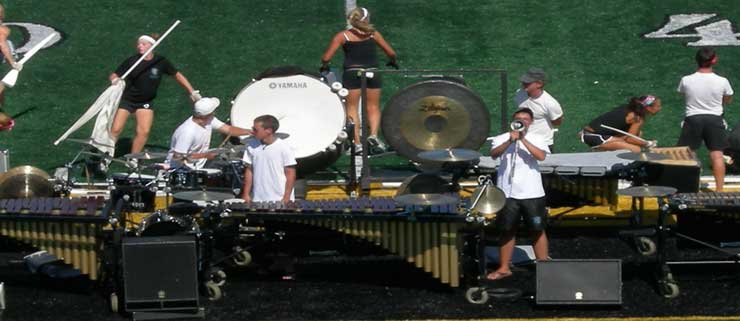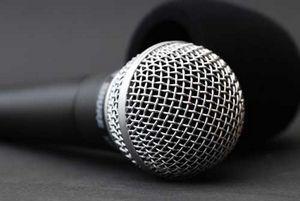.jpg) String instruments are divided into two categories: those that are exclusively plucked and tend to have frets (metal strips across the fingerboard), and those that make a sound when a bow is drawn across the strings. The harp is an exception. It has no bow, no fingerboard nor frets, and the strings are plucked.
String instruments are divided into two categories: those that are exclusively plucked and tend to have frets (metal strips across the fingerboard), and those that make a sound when a bow is drawn across the strings. The harp is an exception. It has no bow, no fingerboard nor frets, and the strings are plucked.
The string family includes violin, viola, cello, double bass, harp, guitars, sitar, and other less commonly used strings including mandolin, ukulele and banjo.
Strings in Symphony Orchestra
String instruments work as part of a section in the symphony's orchestra that can include as many as 24 violins, divided into two parts (first and seconds), eight violas, twelve cellos and eight double basses.
The violin, viola, cello and double bass have four strings , tuned to G-D-A-E on the violin, C-G-D-A on the viola and cello, and E-A-D-G on the double bass. The instruments are made of wood held together with glue and the bow is wood with horsehair or synthetic fiber. The body shape and design haven't changed much since their development in the early 1600s.
Strings in Popular and Folk Music
The acoustic guitar is the most common of the plucked stringed instruments, heard in folk and popular music genres, as well as in classical works. Its six strings tuned to E-A-D-G-B-E are plucked with the fingers or using a plectrum, a flexible plastic pick.
The Electric guitar uses pickups to convert the vibration of its steel-cored strings into an electrical current, made louder with an instrument amplifier. While most electric guitars have six strings, seven-string instruments are used by some jazz guitarists and metal guitarists, and 12-string electric guitars are used in genres such as rock and jangle pop.
Bass guitar, with its four strings tuned E-A-D-G, provides a bass line.
The sitar, plucked stringed instrument, uses sympathetic strings along with a long hollow neck and a gourd resonating chamber to produce a rich harmonic resonance. It is predominantly used in Hindustani classical music since the Middle Ages.
The harp is the oldest member of the string family. It takes two forms today: the smaller folk harp or clarsach played in traditional music, and the orchestral harp. The clarsach is more portable and quieter in tone, and the orchestral harp, more difficult-to-transport.
The mandolin belongs in the plucked lute family. It has a body with a teardrop-shaped soundboard, with a soundhole of varying shape which is open.
The ukelele, from Hawaiian ukulele or abbreviated uke, is a chordophone plucked lute, a subset of the guitar family with four strings.
The banjo comes in a variety of forms, including a four- and five-string versions. A six- string version is tuned and played similar to a guitar.
The balalaika is a lute-like Russian instrument, used for folk music, bands and orchestras. It has a triangular body and long neck with three strings. Usual tuning is E-E-A.
The String Players
String players have to look after their relatively fragile instruments, maintain the bow and deal with tuning. Playing a bowed stringed instrument requires sophisticated coordination, patience, perseverance and sensitive aural perception which means the talent or skill to hear the notes 'internally' before playing them.
The absence of frets on a fingerboard means some string players have to learn where notes are, although guitarists are often provided with an indication of where to place fingers.
Children may experience some discomfort with sore fingers when they start learning for the first time. This is normal, and a good string instrument teacher should guard against this, as the children's strength build during the early stages of learning.







 Scroll down to view the comparison chart of over a dozen different portable digital audio recorders.
Scroll down to view the comparison chart of over a dozen different portable digital audio recorders.